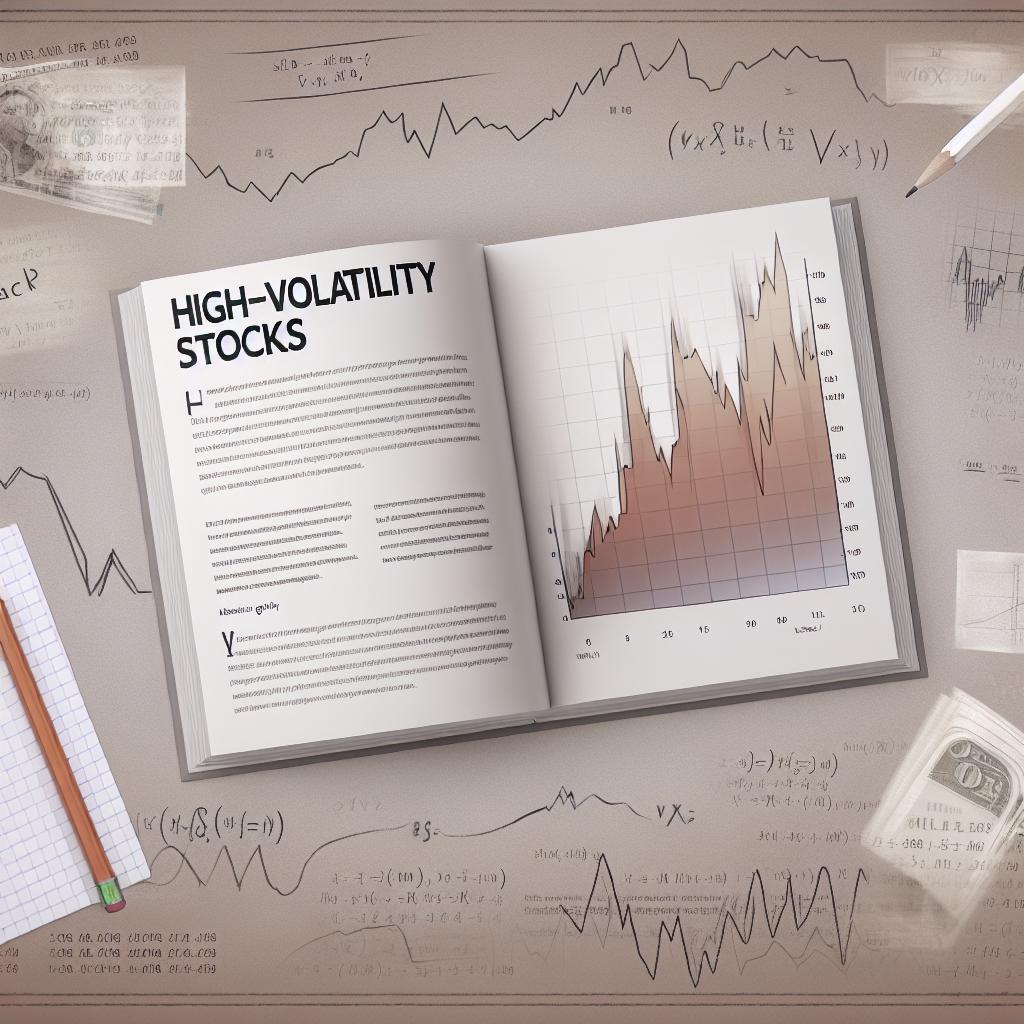Understanding High-Volatility Stocks
High-volatility stocks represent a distinct segment of the financial markets, marked by frequent and substantial price changes over short periods. These stocks can be a double-edged sword, presenting potential for high returns as well as significant risks. To navigate this challenging landscape successfully, traders require strategic planning, deep knowledge, and adaptability.
In financial terminology, volatility refers to the measurement of price variations of a stock over time. High-volatility stocks can sometimes tantalize traders with possibilities of considerable profits. However, these prospects come with elevated risks, demanding a comprehensive understanding and a tactical approach to effectively manage the associated unpredictability.
Importance of Research and Analysis
Fundamental to trading high-volatility stocks is meticulous research and detailed analysis. Traders are advised to accumulate extensive information regarding the company’s financial health, existing market conditions, and prevailing industry trends. This information can often be sourced from various channels, including news reports, quarterly earnings disclosures, and management commentaries. Keeping abreast of these sources provides insights that are critical for informed decision-making.
In addition to fundamental research, employing technical analysis can be immensely beneficial. Technical tools and charts allow traders to scrutinize price patterns and trading volumes. These analyses provide data that can be leveraged to predict prospective market movements based on historical trends. Familiarity with technical indicators such as moving averages, RSI (Relative Strength Index), and MACD (Moving Average Convergence Divergence) enables traders to develop more informed strategies.
Diversifying Your Portfolio
An essential component of risk management in trading is diversification. The principle of diversification involves spreading investments across multiple assets to minimize the negative impact of one asset’s poor performance on the overall portfolio. In the context of high-volatility stocks, diversifying a portfolio might include a blend of high-volatility and low-volatility stocks, as well as other types of assets like bonds and real estate.
By adopting such a strategy, traders can cushion their portfolios against excessive losses that may arise due to the inherent risks present in high-volatility trading. Furthermore, diversification offers the added benefit of potentially capturing gains from various sectors, thereby enhancing overall profitability.
Setting Clear Entry and Exit Points
A critical element in the trading of high-volatility stocks is the establishment of clear entry and exit points. These predetermined points play a crucial role in managing trades, enabling traders to avoid the emotionally-driven decisions that can occur amidst abrupt market fluctuations. Entry points may be identified through the use of technical indicators, such as breakout patterns or fundamental developments like a company’s earnings report. On the other hand, exit points can be defined by target profit margins or as a response to unfavorable price movements.
Clear entry and exit strategies empower traders to maintain control and discipline, particularly in volatile markets where impulsive decisions can lead to financial setbacks. Anticipating various scenarios and setting these boundaries ensures a proactive rather than reactive trading approach.
Using Stop-Loss and Take-Profit Orders
The utilization of stop-loss and take-profit orders is pivotal in the effective management of risk. A stop-loss order is designed to automatically initiate a sale of a security once it hits a specified price. This mechanism is essential in limiting potential losses within a volatile market environment. Conversely, a take-profit order serves to secure earnings by selling the stock when it reaches a targeted price level.
Implementing these automated trading orders is instrumental in safeguarding a portfolio from the extreme volatility that might otherwise lead to detrimental financial consequences. Additionally, such orders allow traders to adhere to their predetermined strategies without necessitating constant market monitoring, offering peace of mind and strategic consistency.
Staying Updated with Market Events
In the realm of high-volatility stocks, awareness of current market events and their potential impact on stock movements is indispensable. Economic announcements, political events, and industry-specific developments all possess the capacity to influence stock volatility significantly. Traders are advised to keep themselves informed by subscribing to financial news services or utilizing market analysis tools to remain ahead in this dynamic environment.
This proactive approach allows traders to make well-timed, informed decisions rather than reacting spontaneously to inaccurate or outdated information. Being informed on market shifts and news can open doors to opportunities while mitigating risks associated with unforeseen events.
Maintaining a Long-Term Perspective
Despite the association of high-volatility stocks with short-term trading due to rapid price changes, maintaining a long-term perspective can equally be advantageous. Many investors focus on the fundamental growth potential of a company, enabling them to withstand short-term volatility in anticipation of realizing significant gains over time. Long-term strategies often factor in broader market trends and economic conditions, which could lead to more substantial rewards and reduced stress from daily market fluctuations.
Evaluating a company’s competitive advantage, future earnings potential, and market position are critical components of a long-term investment strategy. By integrating these aspects, traders may endure volatile periods while ultimately benefiting from overall growth in a company or sector.
For further insights into trading strategies and broader financial markets, exploring additional resources from Investopedia and Morningstar is advisable, as these platforms offer a wealth of information and analytical tools tailored to support traders and investors with varying levels of expertise.





